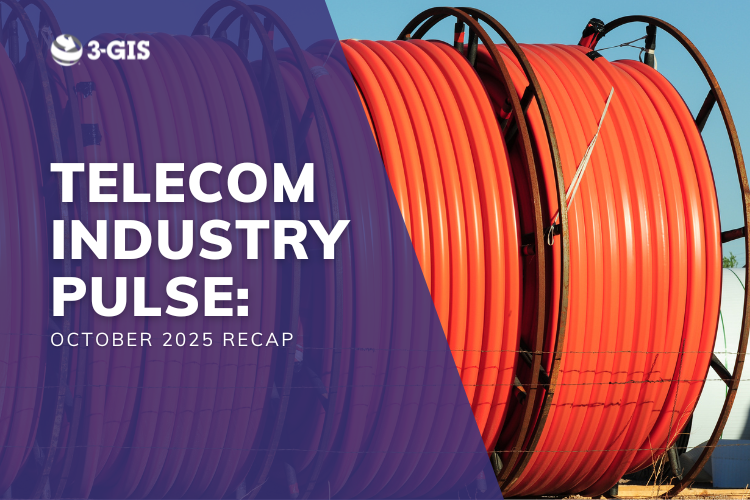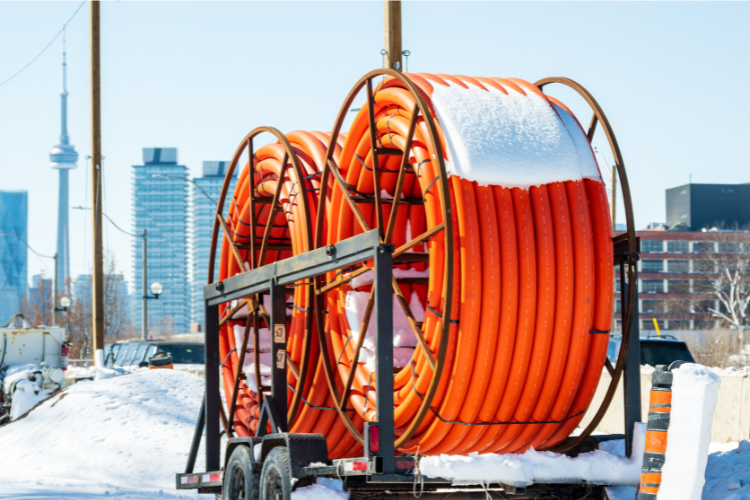Cost miscalculations. The silent deal-killers of the fiber proposals process. Following our exploration of slow, manual processes and asset visibility challenges, we now address the most problematic factor that 37% of organizations we surveyed in a recent webinar identify as their biggest hurdle: creating accurate cost estimates.
When responding to fiber RFPs and service requests, nothing impacts success more than pricing accuracy. Too high, and you price yourself out of the market; too low, and you win unprofitable contracts that damage your bottom line. As we close our fiber proposal optimization series, we'll examine why cost estimation is so challenging for fiber providers and how modern GIS fiber management can transform this challenge from a proposal roadblock into a strategic asset.
Challenge #3: Inaccurate cost estimates
Regional cost variations, sometimes of up to 275%, make accurate fiber deployment estimation not just challenging but decisive in winning deals.1 This creates a precision problem difficult to solve using traditional methods. To understand why, we need to examine some of the common methods being used today.
Non-specialized routing tools
Using general mapping applications seems convenient but typically results in inaccurate estimates. These tools may not have an upfront cost to use but rely on blanket cost-per-foot calculations. They prioritize the shortest route, which is not always the best, failing to account for obstacles like bridges, interstates, protected lands, or HOA restrictions.
Manual route design
While this method produces accurate designs with less risk of rescoping, it consumes excessive resources. Teams often invest significant time and energy into proposals (which ultimately may be rejected), and the route analysis is siloed to just an individual site rather than informing a broader strategy.
GIS-powered precision
Advanced fiber planning solutions revolutionize proposal accuracy through sophisticated spatial analysis. These tools can leverage a constellation of polygons based on census tract data to apply variable cost calculations. For example, in downtown Boston, the system can analyze population density and calculate against the average cost per foot to determine location-specific pricing.
This precision is especially valuable given the substantial investment opportunity in fiber infrastructure, estimated at nearly $20.9 billion by 2030, making accurate cost modeling essential for capturing market share.2
 Using custom cost per foot polygons in 3-GIS | Web
Using custom cost per foot polygons in 3-GIS | Web
This technology offers several critical advantages:
- Identifying railroad crossings and river crossings help the system avoid cost escalation
- Applying special pricing to areas with unique requirements like historical districts
- Accounting for protected lands and parks that require special handling
The end result is a highly accurate route that takes all these factors into consideration rather than a simplistic calculation based on line distance.
Quality assurance streamlines verification
While generating cost estimates is crucial, checking, double checking, and triple checking form an essential part of the process. GIS fiber management enable teams to create a low-level design (LLD) with necessary structures, fiber cable sizing, and other elements to validate initial estimates.
These systems include tools that allow users to see errors in their data and update them on the same screen to match standard rule checks.
The final step involves leveraging a bill of materials that can be viewed alongside proposed routing costs to ensure all components are accounted for—from equipment like patch panels to items that might not necessarily be mapped such as tracer wire.
Best practices for accurate cost estimation
As fiber providers look to improve their cost estimation processes, consider these practical tips:
- Leverage GIS data, such as demographics, network coverage, etc., when possible
- Automate cost-per-foot calculations for faster, more accurate budgeting
- Prioritize QA/QC for data accuracy prior to submission
Transforming fiber proposals end-to-end
During this three-part series, we've explored how GIS fiber management address three critical industry challenges: speed limitations, inadequate asset visibility, and inaccurate cost estimation. By implementing these technologies, providers can dramatically improve proposal success rates while using fewer resources, positioning themselves more competitively in today's market.
Companies utilizing GIS-integrated solutions have shortened construction timeframes from project launch to close-out by 31% on average for fiber deployments.3
Consider these fundamental questions when evaluating your proposal process:
- How is your data stored and analyzed today?
- How can your scoping process improve?
- Can you easily track which assets are available?
By bringing together connectivity data and spatial analysis, providers gain a more competitive position in an increasingly crowded market—winning more deals, optimizing network investments, and accelerating revenue.
Miss the first part of the series? Read it here. Want more insights? Watch the full webinar or contact our team today.
Citations:
1 Fiber Broadband Association, "2024 Fiber Deployment Annual Report," https://www.fiberbroadband.org/page/fiber-deployment-annual-report
2 Mordor Intelligence, "Fiber Optic Cable Market Size & Share Analysis - Growth Trends & Forecasts (2023-2028)," https://www.mordorintelligence.com/industry-reports/fiber-optic-cable-market
3 Sitetracker, "Sitetracker Launches GIS Link to Speed Broadband Deployments Worldwide," https://www.sitetracker.com/sitetracker-launches-gis-link-to-speed-broadband-deployments-worldwide/



